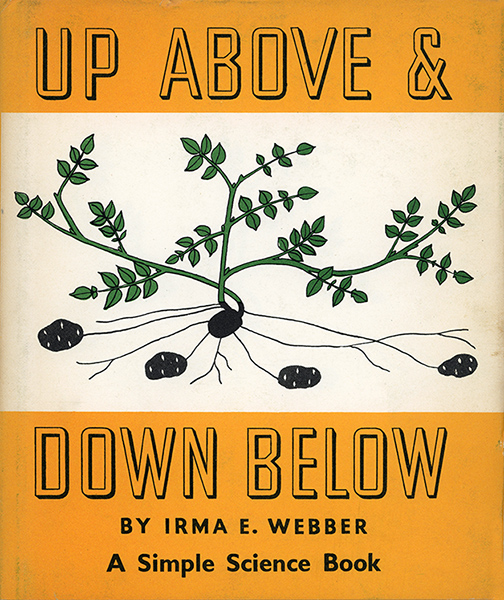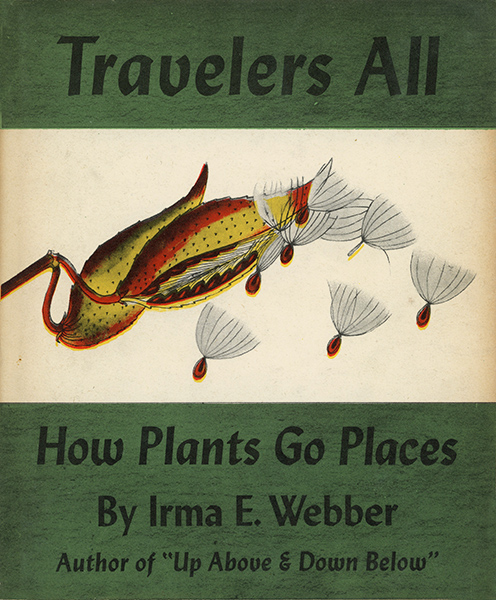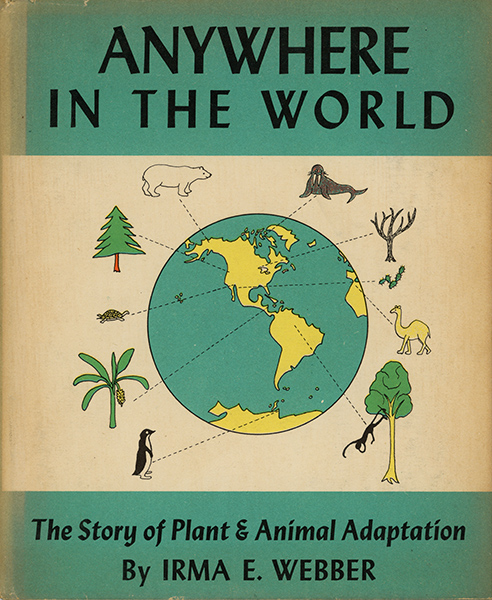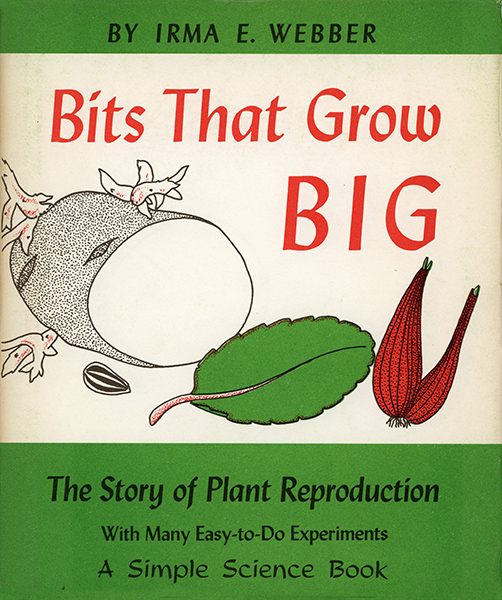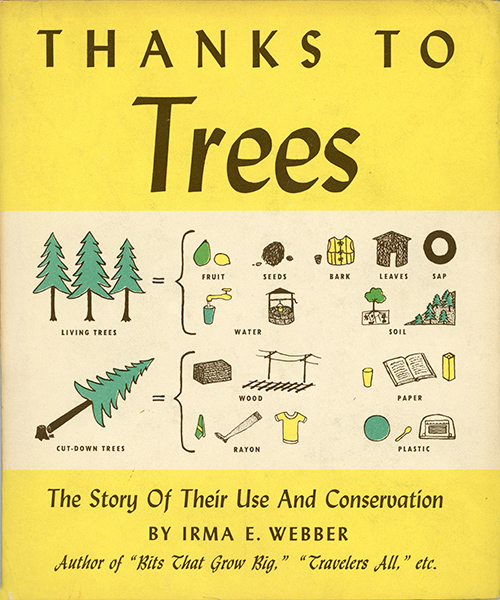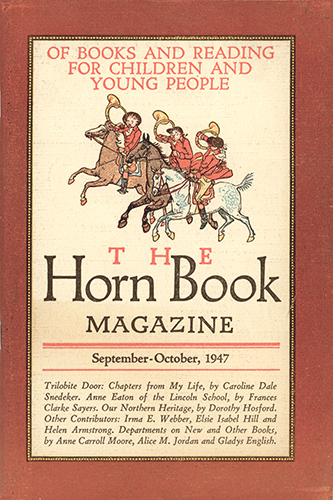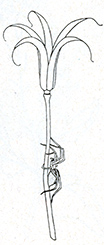|
article in The Horn Book
Magazine, Sept.-Oct. 1947
R. S. V. P.
By IRMA E. WEBBER
With drawings by the
author
SOME
invitations are precisely worded, beautifully
engraved, and even gilt embossed. They
generally come in two envelopes. Less elegant
invitations, to perhaps more pleasurable
affairs, are sometimes painstakingly penned or
hastily scrawled. Others are casually extended
over the phone or over the fence. Still others
come to us in such camouflaged form we may not
heed them because we do not readily recognize
them.
Some of my most
memorable invitations have been worded simply,
"Mommy, come see! " They were first extended to
me when my husband, son Herbert, and I were
living at the foot of Riverside's Mt. Rubidoux.
In those days, I frequently whizzed through the
housework in order to study the anatomy of
plants while Herbert played. My converted
breakfast-nook laboratory overlooked the large,
completely fenced back-yard playground, so I
could alternate studious gazing into the
microscope with motherly glancing out the
window. While this arrangement permitted some
botanical progress, the periods of study were
frequently shortened by Herbert's eager
invitation, "Mommy, come see!" In the years
since, I've been thankful that I sensed this was
an invitation, rather than a mere interruption,
and that I so often went to see what Herbert
wanted me to see.
What was I invited
to see? Nothing the newspapers considered
newsworthy. Nothing my adult friends picked as
topics for conversation. Just matters of genuine
interest to a small boy: little, crooked plants
that pushed up the soil; taller, straighter
plants that pread out new leaves; the
California Poppy bud that doffed its dunce cap;
the tomato that was red enough to pick; the
honey bees that buzzed about the rambler roses;
the birds that pecked the figs; the glistening
trail left by a snail; the lizard that climbed
the pergola; the water that gurgled out of a
gopher hole; the ants that labored with their
loads; the worms that wiggled in the mud; the
clouds that floated in the sky; the shadows that
changed. shape. These are but a few of the
things I was invited to see in Herbert's
backyard world.
I soon learned that,
so far as Herbert was concerned, " Mommy, come
se!" didn't always mean " see " in the visual
sense. Often the invitation was really to touch,
or smell, or listen. Herbert soon discovered
that different parts of a rose bush don't all
feel and smell alike, and that there is no more
similarity in the feel of stickery rose leaves
and sticky petunia leaves than there is in the
fragrance of roses and petunias, or the song of
jays and canaries, or the flavor of carrots and
spinach. As Herbert, without assistance,
repeatedly discovered significant similarities
and differences in the things about hin;i, I was
repeatedly struck with the contrast between the
sharp observations of a young child anxious to
learn, and some of the perfunctory, slipshod
observations I had encountered among college
students who admittedly enrolled in science
courses solely because some science was required
for graduation.
When Herbert was
nearly four, Irma Jean was born. By the time she
was two, she also invited me to "see" many
things. Her interests in backyard matters were
as varied, and her observations as keen as
Herbert's had been in his pre-school years.
Moreover, they clearly indicated a lack of any
inborn, feminine dislike of mice, grubs,
spiders, or mud.
When Irma Jean was
not quite three, I enrolled her in a small, but
very good, nursery school. She was delighted
with the idea of going to school as Herbert did,
and she thoroughly enjoyed the school
activities. With both children in school five
mornings a week, I once again found a good deal
of time for intensive work on plant anatomy. The
whole family was very happy until the nursery
school director moved away and the nursery
school closed. This meant, that after having
experienced the companionship of children her
age and the assorted activities of school, Irma
Jean couldn't go to school because she had
suddenly grown too young. It also meant that I
had a broken-hearted youngster who knew she was
old enough for school because she had gone to
school for about a year. I couldn't stand seeing
her so forlorn, and felt that the least I could
do to attempt to cheer the child was to supply
some of the school activities that she craved.
Accordingly, for the next year, a large share of
my time and energy was devoted to running a
sort of one-child school.
Fortunately, the
back-yard still invited a great many
observations and activities. The near-by rocky
slopes of Mt. Rubidoux invited hikes midst
chaparral and its dwellers. The house invited
mastery of simple tasks. Clay, blackboard and
chalk, paints, crayons and paper invited
artistic expression. And fortunately, the
junior branch of the public library invited even
those who were "too young" for school.
Our junior branch
library doesn't extend its invitation in the
most modern or elegant housing in town. No, its
invitation is just an unpretentious, genuine
welcome to all, betokened by good books, a
comfortable place in which to peruse them, and a
cheerful librarian with helpful suggestions. Its
invitation is restfully quiet yet audible.
Generally there is a soft shuffling of books.
The canary is apt to sing, or splash, or crack
seeds. The phonograph plays opera on occasion.
The librarian sometimes reads aloud to groups.
And once in a while, a book, too cumbersome for
little hands, falls with a resounding thud.
In this little
library for little folks, I found friends of my
own childhood along with the latest in
children's literature. There were books that
invited song and laughter, books that invited
enjoyment of beauty, books that invited journeys
to real and imaginary places, and books that
invited a better understanding of things close
at hand. There were books that one felt lucky to
discover. There were also some books that made
me wonder why anybody ever bothered to print
them, and some that made me wish they could have
been printed in larger type, or better
illustrated, or put together in more durable
form.
Even with the many
types of books to appeal to many tastes, I found
great gaps in available material that invited
other books for other needs. My own training in
botany, combined with the great pleasure I have
seen many people derive from an interest in
nature, and my own children's early interest in
nature, perhaps made the gaps in factual plant
literature for youngsters seem
disproportionately large·. After bothering me
for some time, these gaps seemed to invite me to
divert some time from technical botany into an
effort to bridge a few gaps in children's plant
literature.
I believe the
response to the little books resulting from this
effort should partially answer the often-asked
question of whether my children's early interest
in nature wasn't an atypical one induced mostly
by heredity, or by association with botanical
parents, a botanical grandfather, and their
botanical friends. Basically the children of
scientists seem to be as human as those of
plumbers or poets. All children normally want
to acquaint themselves with their surroundings,
whatever their environment. Unfortunately, all
children don't have sunny, back-yard playgrounds
where they can become• acquainted with plants
and the animals the plants attract. Yet whatever
their environment, children are little human
beings, and, as such, inescapably concerned with
living things and the forces of nature that
influence all life.
Modern children
often have their early natural desire to learn
about nature's marvels curbed or crushed by
parents or teachers. There are homes where
children are told in very positive terms to
refrain from ever again picking up those
ghastly, disgusting grubs; those horrid, slimy
snails; those awful, wiggly worms; or those
dirty, sticky pine cones. There are homes so
overcrowded, or so full of parents' priceless
bric-a-brac, that they lack any space for a
sparkly rock, a curiously shaped seed pod, or a
beautiful shell that a child finds and yearns to
keep. There are homes where a child's questions
about the sky, the earth, a plant, or any animal
are always answered," Don't know," in a manner
that implies, "And don't care! "
A young child that
has had his desire to learn something about
nature nearly squelched at home, may have the
squelching completed in his early school years.
Where the teacher has a huge class and a
schedule that must be rigidly followed, there is
apt to be little time to look at nature
materials children bring to school, and no time
to answer questions about them. Even where there
is a nature study period, something so rare as a
Southern California hail storm may pass
unnoticed by the teacher because the hail
signals its invitation to look out-of-doors
during the arithmetic period. It takes an
earthquake to awaken an awareness in some
adults of greater things than personal
schedules.
Important as plans
and schedules are, unexpected events often make
changes in them necessary or desirable. How
often the acceptance of a sudden invitation to
the unfamiliar seems doubly pleasurable because
we hadn't scheduled it! Yet the fact that
children's interests so often are aroused
without reference to the schedules of their
parents and teachers too often means that early
interests worth developing are persistently
ignored or repeatedly rebuffed until they
perish.
Fortunate are the
children who learn early that their interests,
regardless of when they are aroused, are always
invited to develop and expand at the library.
Yet even at the library, development of
interests is occasionally curbed by lack of
information in assimilable form. That is why I
feel that inviting, intelligible books about
matters that interest young children are every
bit as important as technical works for
specialists.

|
|
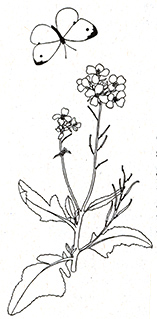
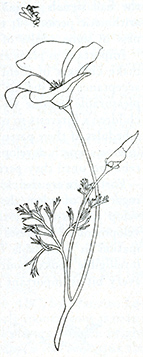 |
